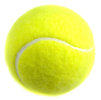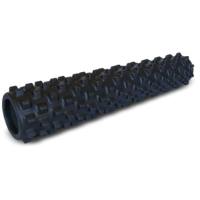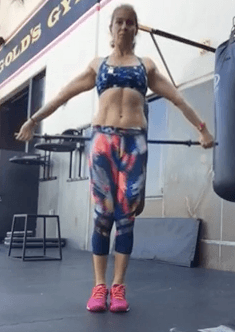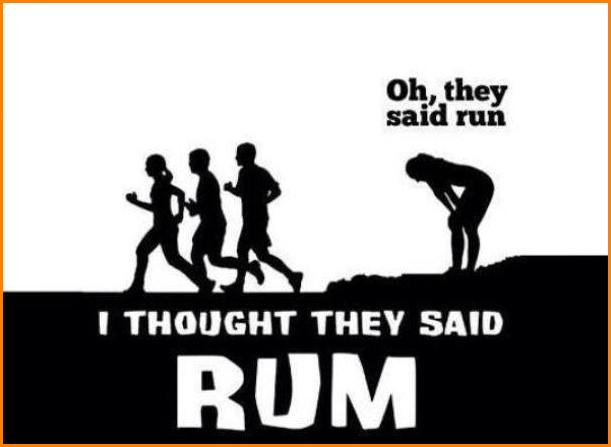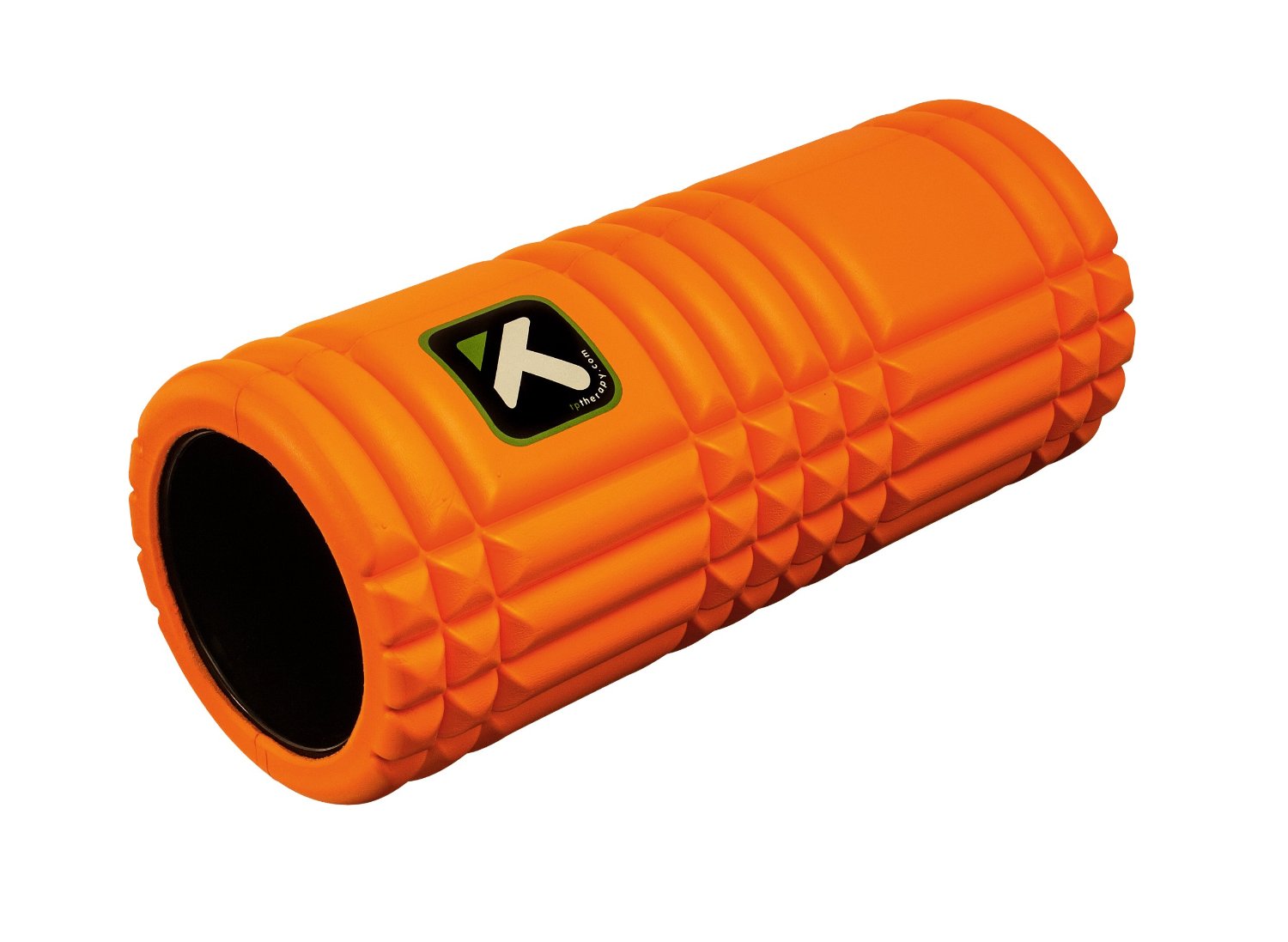All high-level athletes are pushing their limits to the extreme. For a tennis player, the uneven nature of the sport where one side is used more than the other in addition to training every day for hours, and frequently on hard surfaces, the body gets a lot of beating. If you want to remain healthy, you need to spend a lot of time on recreating balance and health in your body. I dare to say that you need almost more time than on playing tennis, especially as you are getting older. You need to stretch after each practice (try this great stretching routine), pay good attention to your body, and listen to its subtle signs signaling you what is happening. You need to be aware of your posture, balance, flexibility, and “evenness” of your both sides, where the right and left side of your body should be equally strong and flexible.
The pro tennis players spend enormous amounts of time on rejuvenating their bodies with massage, physical therapy, and myofascial release therapy. You may not have the monetary means to do that on a daily basis, but you still need to take equally good care of your body in the same way as the professional tennis player does. The self-myofascial release techniques come to your help and they will do almost as good job as a massage, with the difference being that you have to be active.
Myofascial Release Technique
Myofascial release is a technique where you “massage” and stretch the fascia, so it will return to its original soft and subtle texture. Fascia is a specialized, tough layer of connective tissue that surrounds muscles, bones, and joints and gives support and protection to the body from head to toe. Fascia is extremely strong and usually transmits mechanical tension generated by muscle activity and external forces. When there is a chronic tension, the fascia hardens, thickens, and restricts the free muscle movement and that leads to even more dysfunctions. Micro-tears of the tendons can develop.
Trigger Points
Muscular injuries and trauma, improper body mechanics or structural imbalances, poor nutrition, lack of sleep, stress, or overtraining can cause development of trigger points, which are small, extremely painful spots in your muscles. If you push on these spots, you will feel agonizing pain and will want to pull away. Trigger points inhibit proper function of the muscle fibers and therefore create more problems. Generally, once the trigger point exists, it does not want to relax on its own and you have to help to release it. It is difficult to diagnose and treat trigger points, as they often refer pain to other parts of the body. Therefore, it is very important for you to be in touch with your body by always looking for trigger points and releasing them before they can create more problems in the future.
The following myofascial routine will help you to find and release the annoying trigger points. Perform the routine regularly and you will learn how to be smooth in getting into the positions on the ball, how much pressure you need to apply, and where are the spots that you need to address. The more intense your training is, the more frequently you need to perform the myofascial release routine.
Myofascial Release Tools
You can use the traditional foam roller for your myofascial release, but I think you will outgrow it fast, and the release will not be deep enough. I have two favorite tools for myofascial release: 1) the 6-inch foam ball, which has been my absolute favorite until the rumble roller came out, 2) 31 inches long Rumble Roller, which is very firm and penetrating. Each tool serves different purpose, so I do recommend owning both. The foam ball is easily portable and you can have it in your tennis bag or purse all the time. The rumble roller is quite big, not as portable, but it reaches spots in your body just as human fingers would. Another great roller, somewhere inbetween the ball and the firm rumble roller is The Grid Roller. It is quite firm and portable. I have 3 of them!
Self-myofascial Release Routine
Always give attention to your entire body. However, if you find some specific areas that are more out of balance or more painful, spend extra time on those. The painful trigger points in your body will move around, and you need to pay attention and correct the small problems before they create more serious issues and injuries.
1. Quadriceps. Start your routine with lying on your stomach and rolling your quadriceps. Observe if the right and left side feel different. Make sure to roll the front, inner and outer parts of the quadriceps. Then pull one leg to the side…
2. Adductors. Place the ball on the inner thigh of the away leg. Roll the entire way from the knee toward your groin. Make sure to reach both front and backside of your adductors. When done, transition to the hip flexors, rolling your ball high up into the hip area…
3. Hip flexors. Make sure to relax and let the ball sink deep into the hip area. Pay attention to make both sides even. Then roll over to the side…
4. IT Band, or illiotibial band. Spend a good amount of time on the entire length of the IT band, addressing also the front and backside. Then roll the ball high up on your hip…
5. TFL, or tensor fasciae latae. TFL is very thick and you need to work it deeply. Roll on the ball with both straight and bent leg. Pay attention if both sides feel the same. Then roll over on your back…
6. Piriformis and gluteus. If you neglect it, you can experience nagging lower back problems or “sciatica” issues. Take your time to find all the trigger points. Then slide the ball under your hamstrings…
7. Hamstrings. They are more difficult to roll, because it is hard to put full body weight on the ball, especially if you have limited flexibility. Try to get as much of your body weight on the ball as possible. Then move the ball to the bottom of your spine…
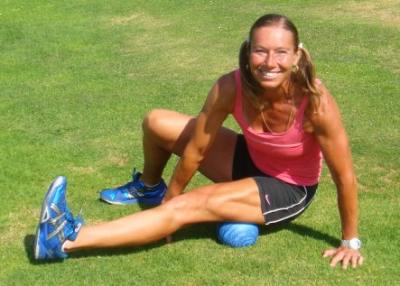
8. Spine feels very good to roll on. Roll from the bottom up toward your neck and down again. Repeat a few times and feel how rejuvenated your spine will become. Move the ball to the upper back area…
9. Upper back. Initially, rest on the ball and relax. Let your shoulders and arms sink. Then roll around the entire upper back area and look for tightness, especially in your dominant side. When done, roll over on your stomach with the ball under your chest…
10. Chest. Roll the entire chest area from the sternum, around the clavicle, and outward to your arm. Continue on your biceps. Then get up on your knees with the ball under your lower leg…
11. Lower leg muscles. It feels very good to massage the outside part of the lower leg—an area seldom addressed. Roll from the ankle toward your knee and back. Then turn around to move on the calves…
12. Calves. They are hard to roll on the ball, because they need deeper penetration. Start on the ball first, and then use your opposite knee to reach deeper.
The routine takes 20 to 40 minutes to finish, depending on how long you stay on different areas. You will find myofascial release quite painful, initially. As you muscles get healthier and more functional, you will enjoy the myofascial work much more, because it won’t hurt as much. Eventually, you reach the point that you enjoy doing myofascial release as much as you enjoy a good massage.
Keep learning how to treat yourself, especially if you have issues with chronic injuries. Finding and massaging away the trigger points with the myofascial release regularly will prolong your athletic career, increase the functionality of your muscles, and decrease the injuries that you suffer. Keep rolling and play injury-free tennis for the rest of your life. Your performance and tennis game will improve dramatically, too!

Another good exercise to prevent future injuries is to rebalance your hips with this simple exercise described in the past article here. Also, remember to take a good care of your core and keep it strong with these variations of planks.
If you like to have all the fitness tips close to you at all times, you can find a paper or Kindle book on Amazon.com. It is small enough to fit your tennis bag and you can work on your health any time.
Work on your tennis fitness and play great tennis!
